10 Films To Watch This Halloween
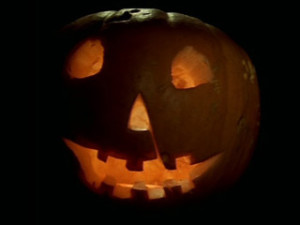
Well it’s that time of the year again! The leaves are falling from the trees, all manner of cheap fireworks are beginning to sound in the evenings, and the stores are full of masks and costumes, barmbracks and nuts. As far as cinema goes, Halloween is traditionally associated with the horror genre and we can expect many such films to turn up on television over the coming weeks. But what constitutes a horror film exactly? Is it merely about eliciting screams and good old-fashioned jolts to the senses? Do you recall your first encounter with this category of film? Could you sleep afterwards? Did nightmares follow in the wake of characters such as Michael Myers or Carrie White? Perhaps you had a fear of Freddy Krueger entering your dreams for real just as he was doing on the silver screen. And as for satanic-looking children like Damien Thorn or Regan MacNeil!!
In terms of cinema, the genre has been with us from the earliest inception of the art form itself. During the silent era of cinema we had European forays in the form of The Cabinet of Dr. Caligari (1919), The Golem (1920) and Nosferatu (1922). American cinema sat up and began to take notice, particularly with the advent of the talkies. The threat was no longer just a visual one, but aural as well. And so in the 1930s with dedicated directors such as Tod Browning and James Whale classic Gothic literary texts like Dracula, Frankenstein, and Dr. Jekyll and Mr. Hyde were properly introduced to cinema-goers. The famous count himself (as played by Bela Lugosi in the 1931 U.S. version) has had a whole plethora of silver screen outings over the years. Frankenstein and his abomination of science have not fared too badly either. Then in the post-war era we had the spate of Hammer Horror films beginning in earnest with 1957’s The Curse of Frankenstein. Christopher Lee and Peter Cushing became faces indelibly linked with these particular films. In 1958’s The Horror of Dracula, the Count had only 13 lines to say in the entire film, but Lee’s execution of each one left audiences wanting more. An innate appetite for this sort of film is at the very heart of the horror genre. As humans we have a fascination with the unexplainable, with matters which go well beyond the limits of scientific possibility. The classic horror movie is one that plays upon our fears, whilst also gratifying a sense of security we seek to reaffirm over and over again. Of course there’s no monster lurking in them there woods! Werewolves aren’t for real! Freddy Krueger is just a figment of someone’s over-active imagination! Right??
In more recent times the parameters of the genre have become somewhat stretched. I’m talking about classification here, and it’s something I have a slight issue with. I recently saw a film called Don’t Breathe at the cinema and, subsequently, reviewed it on this very site. Many other reviewers have chosen to designate this tight well-worked suspense/psychological thriller a horror film. I entirely disagree. Don’t Breathe’s central premise is that of the intended victim turning the tables on his would-be oppressors (in this case a girl and two guys seeking to relieve him of a bundle of money). There’s tension and imminent danger aplenty, yes, but calling it a horror film is a misnomer. The same goes for even more prominent films such as Hitchcock’s Psycho and The Birds, Robert Aldrich’s What Ever Happened To Baby Jane, Spielberg’s Jaws, Cronenberg’s The Fly and Jonathan Demme’s multi-Oscar winning The Silence Of The Lambs. These are not horror films in my humble opinion. They may well invoke feelings of fear, but an important distinction should be made between these types of films. All too often we’ve become lazy with our labels in this respect. The expanse of the horror genre is wide, but it shouldn’t encompass every single film which raises a hair or quickens the heartbeat. Just how exactly is the shark in Jaws or Bette Davis in Baby Jane the seeming equivalent of a Michael Myers or a Damien Thorn? And as for The Fly or The Birds or even Norman Bates. These are tales of nature corrupted, of characters who have become twisted in on themselves. But they are not horror films for me. Not even Hannibal Lecter in all his culinary splendour.
Agree or disagree with me on the above you may well do, but as you contemplate this very point, consider the below 10 films I’d recommend for viewing over Halloween. There’s a more contemporary flavour to this list I must admit and apologies in advance that I’ve omitted the monster movies from the 1930s and 1940s, as well as the Hammer Horrors. But in any case, check out one or more of the below if you haven’t done so previously. And Happy Halloween of course. Sleep tight. The Boogeyman really doesn’t exist. I’m fairly certain…
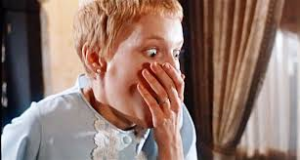
Rosemary’s Baby (Roman Polanski 1968)
Adapted from the 1967 novel of the same name by Ira Levin, this was director Polanski’s first American film and he made a fairly indelible impression on the genre with this taut psychological horror concerning an unsuspecting young housewife, played by Mia Farrow, who finds herself the subject of a pact with an underground religious cult. Paramount head honcho Robert Evans deserves particular praise for dangling the project before the Polish director, and so bringing him to the attention of a wider audience than he’d had up to this time. As for the production itself, you just have to love the casting of the central performers. Farrow, best known at this time as Mrs. Frank Sinatra, was pitch-perfect as the delicate Rosemary who, against the common laws of nature, loses weight during her pregnancy and begins to suspect something is greatly amiss in her antiquated apartment building. John Cassavetes plays her fickle actor husband whose career strangely begins to move upwards when the couple befriend an elderly pair next door played by Sidney Blackmer and the utterly delicious Ruth Gordon. Gordon herself won the Academy Award for Best Supporting Actress and Rosemary’s Baby deservedly has its place in the pantheon of classic horror films. Watch out for small supporting turns from Elisha Cook Jr and Charles Grodin. The eerie lullaby as played over the opening and end credits will ring in your ears for days after.
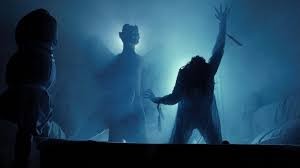
The Exorcist (William Friedkin 1973)
Director William Friedkin followed up his classic action thriller The French Connection with this supernatural horror which is perhaps the kingpin of the genre as a whole as far as I’m concerned. The antics the demanding director got up to on his set (including injuring his leading actress and discharging a firearm behind Jason Miller) are well known, as are the apparent curses which arose during filming, but look past all of these and you have one of the most atmospheric and effective horror films ever committed to celluloid, as well as a telling examination of faith. Based on William Peter Blatty’s 1971 novel of the same name, The Exorcist tells the story of Chris MacNeil (a superb Ellen Burstyn) whose daughter Regan (Linda Blair) is apparently possessed by a demonic force. The main action of The Exorcist takes place in the northwest Washington district of Georgetown, but, if you happen to be a first-timer to this superb film, appreciate, if you will, the highly atmospheric opening scenes which take place in Iraq involving Father Lankester Merrin (Max von Sydow). His arrival at the MacNeil residence later in the film is of course one of the most iconic images in cinema as was inspired by the Rene Magritte 1954 painting Empire of Light. So much to admire in this classic entry in the genre, not least the performances of von Sydow, the aforementioned Burstyn, Jason Miller (as the troubled Fr. Damien Karras), Lee J. Cobb (as the genial lieutenant Kinderman) and, of course, then 14-year-old Linda Blair. Irish character actor Jack MacGowran made his last cinematic appearance as the alcoholic director Burke Dennings. Oscar-winning actress Mercedes McCambridge provided the satanic voice. Mike Oldfield’s Tubular Bells became a hit after the film’s release. Pea soup will never seem the same again. Watch it alone, preferably with the lights down low.
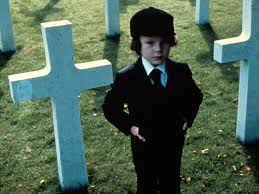
The Omen (Richard Donner 1976)
If they were handing out awards for the creepiest kids in movies, then surely Harvey Spencer Stephens would win it hands down for his Damien Thorn. The wee bairn is the adopted son of American diplomat Robert Thorn (Gregory Peck) whose wife Katherine (Lee Remick) is unaware that she lost her real child in birth (or did she, as we later find out). All sort of spooky things start to befall the hapless couple as Robert takes up his position as U.S. Ambassador to the United Kingdom, including large black dogs, aggressive baboons at the zoo, a half-crazed Catholic priest who has dastardly foretellings, and a nanny who publicly hangs herself at Damien’s fifth birthday party. Her replacement Mrs. Baylock (Billie Whitelaw) also deserves an award of sorts for the most evil looking nanny in the history of cinema. It’s not long, of course, before Robert begins to suspect that much is amiss with his adopted son, and his search for the truth takes him to Italy and Israel. Famous scenes in this one include the notorious decapitation scene, involving David Warner, and the impaling of the Catholic priest played by former Doctor Who actor Patrick Troughton. Composer Jerry Goldsmith won the only Oscar of his career for the suitably demonic score, which features the very recognisable Ave Satani, which, incidentally, also received a nomination for Best Original Song. Some 40 years later, The Omen remains a very compelling and atmospheric horror film. It was a commercial hit in its day as well and director Donner went on to make other box office successes such as Superman the Movie and Lethal Weapon. Two lesser theatrical sequels starring William Holden and Sam Neill respectively followed in 1978 and 1981. A remake of the original, helmed by Irish director John Moore, was released in 2006.
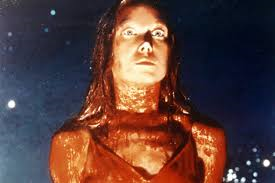
Carrie (Brian De Palma 1976)
The master of shock Brian De Palma delivered this superb realisation of Stephen King’s first published novel the same year as The Omen. Carrie White (Sissy Spacek) is a much taunted teen who, following a highly embarrassing incident in the girls’ showers at the film’s opening, discovers that she has hidden telekinetic powers. One of her classmates Sue (Amy Irving) feels guilty after the shower incident and arranges for her football-playing boyfriend Tommy Ross (The Greatest American Hero’s William Katt) to take the introverted teen to the school prom. Carrie’s mother Margaret (a superb Piper Laurie) meantime is a religious fanatic who constantly denigrates her daughter, the product of a sinful sexual act on her part as she sees her. With excellent performances all around, in particular Laurie and Spacek, and deft direction by De Palma, Carrie is one of the very best of the supernatural horror genre, which also has some pointed remarks to make on the subjects of bullying and teen angst. The climatic prom scene in which the titular character unleashes the full arsenal of her powers is a superbly edited piece and involves frequent use of one of De Palma’s favourite devices, that being the split-screen. The careers of Nancy Allen and the emerging John Travolta were further enhanced by their roles as the couple who dump pigs’ blood all over Carrie at the prom. And that is Sissy Spacek’s arm which appears in the penultimate scene of the film. The actress was insistent that she be the one buried underneath the rocks and gravel. Now that certainly is commitment to one’s art.
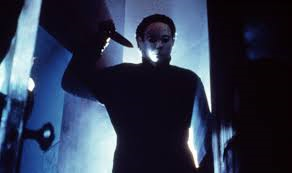
Halloween (John Carpenter 1978)
The film that spawned seven sequels and two remakes, John Carpenter’s low-budget offering from 1978 inspired many a slasher film in its wake and also had a sizeable bearing on Wes Craven’s very popular Scream franchise. The premise is quite simple really – Laurie Strode (Jamie Lee Curtis in her film debut) is spending Halloween night on babysitting duties. Unbeknownst to her, a psychotic killer by the name of Michael Myers has escaped from the sanitarium and is returning to his home town of Haddonfield, Illinois. In an opening prologue to the film, we are shown the events of Halloween night some 15 years before when the then six-year-old Michael savagely attacked and killed his older sister Judith. Michael’s mission of bloodletting has a point to it of course – as we subsequently discover in the 1981 sequel Halloween II – and in this regard he is followed by his psychiatrist Dr. Sam Loomis (Donald Pleasence) who is only too aware of Michael’s destructive powers. The main action of Halloween takes place in a suburban setting and one of the many themes and analyses surrounding the film is that of the underside of this particular milieu. Is Michael Myers nothing more than a very twisted product of his environment? Does he kill in the first instance because of some psycho-sexual disorder? (the opening scene of the film indeed suggests that sister Judith herself has just performed the sexual act). And on that very subject of sex, much debate and analysis centres on the fact that the characters who are killed in Halloween have either engaged in pre-marital sex or have a particular fondness for their substances. Laurie herself, by her own admission, has had no luck with the opposite sex and is bookish by nature. And yet she is the last girl left standing at the film’s conclusion, a significant departure which is cited by many critics as the beginning of the so-called final girl trope. Well the debate and examination continues some forty years after the film’s initial release, but suffice it to say that Halloween remains one of the very best of its genre delivered by a director who, at the height of his powers in the 1970s and early 1980s, knew full well how to deliver on suspense, atmosphere and narrative pay-off. Carpenter also was a deft music composer in his day and the central theme of Halloween perfectly complements the driven killer. Filmed in a mere 20 days in the spring of 1978, Halloween went on to become one of that year’s most successful films and one of the most profitable independent films of all time. The sequels which followed were modest to downright terrible in comparison. Invariably, it seems, that is the eventual fate of horror film franchises. And Rob Zombie’s remakes of 2007 and 2009 were not much better. Skip them and watch the much superior original instead.
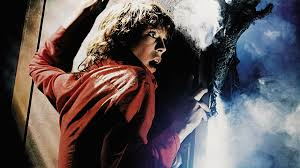
The Fog (John Carpenter 1980)
Carpenter’s first theatrical film following the huge success of Halloween, this one was somewhat underrated in its day, but has since been re-evaluated and deservedly hailed as a cult classic. A Californian coastal town by the name of Antonio Bay is beset by a strange glowing fog as it begins celebrations for its 100th anniversary. Out at sea, three fishermen are brutally slaughtered by some ghoulish apparitions who, as it turns out, are long-deceased mariners intent on exacting revenge on the town that was founded as a result of their betrayal. A stellar cast includes a returning Jamie Lee Curtis and her real-life Mom Janet Leigh. Carpenter’s then-wife Adrienne Barbeau plays the local DJ Stevie Wayne; John Houseman is suitably spooky as Mr. Machen; and Hal Holbrook turns up as the guilt-ridden, but whiskey-drinking Father Malone. Watch out for a brief cameo appearance by Carpenter himself as Malone’s helper Bennett. As for the director himself, Carpenter is said to have been partially inspired for this by a visit to Stonehenge whilst promoting Assault on Precinct 13 in England. As he stood there on the site of the prehistoric monument, a fog apparently rolled in. The rest of the story was conceived by him and co-writer Debra Hill. Just as was the case with Halloween, The Fog was shot on a relatively low budget, but the resulting film does not betray its modest origins. If anything The Fog has not dated badly at all and, once again, demonstrates how effective Carpenter’s minimalist approach is in terms of his narrative trajectory and film-making technique. Some nice in-jokes here too with a mention of Bodega Bay (the main location for Hitchcock’s The Birds) and the aforementioned casting of a famous shower scene victim and her then-emerging daughter. Tom Atkins plays Nick Castle which was the name of the actor who portrayed Michael Myers in Halloween. Rob Bottin is Blake, the leader of the vindictive revenants. Bottin would go on to play a crucial role behind the camera for Carpenter’s 1982 film The Thing as the special make-up effects artist. One I would recommend all horror fans to either see or revisit.
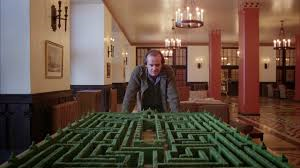
The Shining (Stanley Kubrick 1980)
Another entry in the genre that has rightly been re-appraised with the passage of time, Kubrick’s adaptation of Stephen King’s 1977 novel has, if anything in recent years, been somewhat over-analysed and dissected. Let’s park those theories about NASA, the Native Americans and the Holocaust at the door shall we and enjoy this for what it is – a seminal horror film with unremitting tension, atmospheric twists and turns and the director’s trademark tricks from behind the camera. You know the story of this one I’m sure, but have you seen the extended version which adds just a little more exposition regarding such matters as the Torrances’ domestic life prior to the Overlook Hotel and the real reason why Jack has given up the booze? If not, it’s certainly worth checking out. Elsewhere, marvel at those Steadicam shots as they follow Danny on his tricycle through the maze of the hotel corridors. This was one of the first major films to make use of the then-newly developed technology and credit must also go to John Alcott for his impressive photography. The set for the Overlook itself was at that time the largest ever built at Elstree Studios and replete through the entire production design is the director’s meticulous attention to detail. In typical Kubrick fashion as well, principal photography took over a year to complete and word has it that the as-ever demanding auteur had more than a few run-ins with actress Shelley Duvall on the set. But what of the horror itself you ask? There are critics of The Shining who deride several elements of the film including its deliberate pacing and the many ambiguities such as that famous ending involving the 1921 photograph. Yes, the film is not the most fast-paced of all time, but this in a sense ups the ante for us the viewer which was precisely Kubrick’s intent. And as for ambiguities and loose ends, do we need everything to be absolutely lucid? It seems to me that clarity is not meant to be the purview of the horror genre. The viewer should have his or her doubts and questions at the film’s end. Straight answers are boring in my estimation. I want to believe that Jack Torrance has always been the caretaker as Delbert Grady puts it. The notion that the frustrated husband and writer has been in some way absorbed by the hotel is a fascinating one. On the theme of his film Kubrick made a most telling comment when he said, ‘There’s something inherently wrong with the human personality. There’s an evil side to it. One of the things that horror stories can do is to show us the archetypes of the unconscious; we can see the dark side without having to confront it directly.’ The Shining remains a wonderful and evocative examination of that evil side and Nicholson’s ‘Heeeere’s Johnny’ and references to Room 237 are indeed the stuff of cinema lore. The iconic images of the hotel’s maze, the cascade of blood in the lobby and REDRUM on the bathroom door will be very familiar to you all, but also consider an early scene in which Danny sits on Jack’s lap and asks him if he would ever hurt him or his Mom. Now that is a truly chilling moment in a wonderfully eerie film. One of the very best of its canon. ‘Wendy – I’m home!’
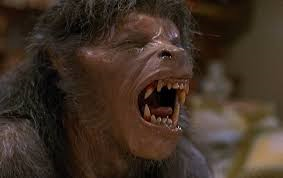
An American Werewolf in London (John Landis 1981)
Terrific horror-comedy offering from John Landis which has the distinction of being the inaugural winner of the Academy Award for Best Makeup in 1981. Actor David Naughton’s first transformation into the werewolf of the title – as realised by Rick Baker – is quite a moment to behold and, in keeping with the film’s overall satiric tone, plays out to a ballad version of Blue Moon by Sam Cooke. That’s not the only song about the moon in the film’s soundtrack if you listen closely and it’s one of many clever touches brought to bear by Landis. The story of two American friends who are attacked by an unidentified beast on the North York Moors was first conceived by the director whilst working as a production assistant on the Clint Eastwood vehicle Kelly’s Heroes. Landis witnessed a group of Yugoslavian gypsies performing a ritual which appeared to be for the purpose of ensuring that the deceased would not rise from the grave. This set the young man’s creative thoughts in flow, but it would be another decade (and breakout hits such as National Lampoon’s Animal House and The Blues Brothers) before his quite unique vision would come to fruition. Not surprisingly his backers for Werewolf were concerned that the film might fall between two stools – that of comedy and horror – but such fears were thankfully allayed when the feature opened to generally fine reviews and robust box office. The film’s best moments include the aforementioned transformation sequence, the scene in the adult cinema in Piccadilly Circus when David is confronted by his victims from the night before, and the final killing spree which takes place on the streets of London. If there is one thing and one thing only you should take away from this film, it’s this: never ever go into a pub called The Slaughtered Lamb. A loose sequel, An American Werewolf in Paris, followed in 1997. It fared moderately well at the box office, but was almost universally mauled (yes, pun fully intended) by contemporary critics.
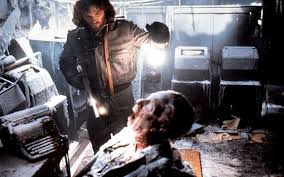
The Thing (John Carpenter 1982)
Carpenter’s best film in my estimation is a seamless blend of the horror and science fiction genres. A group of researchers and other personnel at an Antartic station find themselves under threat from an extra-terrestrial life-form which is capable of assimilating other beings and imitating them right down to the very last detail. If you carefully observe the film Jamie Lee Curtis and the kids are watching in Halloween, then you’ll spot that it’s the 1951 Christian Nyby The Thing from Another World which was produced by Howard Hawks’ Winchester production company. Carpenter was a fan of this version, but saw in the original novella it’s based on (Who Goes There? by John W. Campbell) the possibility of a narrative thrust in which man turns on man as the group is infiltrated by the shape-shifting organism. He achieves this level of paranoia and then some, and much credit for this goes to his deft direction, a terrific script by Bill Lancaster (son of Burt), and a stellar cast which includes Kurt Russell, Donald Moffat, Keith David, Richard Dysart and Wilford Brimley. The special effects designed and created by Rob Bottin and his crew were quite groundbreaking for the time and deservedly furthered Bottin’s career in this particular department. There is so much to admire in The Thing, but chief among these is the decaying group dynamic which is so evocatively portrayed as the viewer is left to a guessing game as to who is human and who is alien impostor. In this regard the blood serum test is one of several standout scenes in the film, as well as the somewhat bleak ending. Theatrically released in the summer of 1982, The Thing went up against Spielberg’s more benevolent narrative about a visiting alien and did not comercially perform as well as it deserved to do. It wasn’t met by the most laudatory reviews at the time either, but, thankfully, has been properly reappraised since that time as one of the very best of the genre. A lesser prequel starring Mary Elizabeth Winstead and Joel Edgerton came our way in 2011. The 1951 version, by the way, is very good as well, but is a much different and more hopeful vision. Of the three, this is the one to catch. A sci-fi/horror classic.
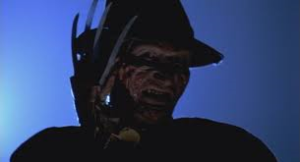
A Nightmare on Elm Street (Wes Craven 1984)
And finally to this one, the original in the Elm Street franchise which introduced us to a burnt and scarred killer with gloves of steak knives. Writer/director Wes Craven named the villain of the piece after a kid who had bullied him at school, but also based him on other facets from his childhood. Initially, he intended Freddy Krueger to be a child molester, but eventually changed this to a murderer after a series of high profile molestation cases arose in California during the film’s production. The resulting film has had a huge influence on the genre as we know and led, inevitably, to a spate of sequels. Shot on a budget of just under $2 million, the film was a huge hit for New Line Cinema and is also notable as the film debut of one Johnny Depp. Comparisons to John Carpenter’s Halloween are not misplaced as again we have themes such as sexual promiscuity examined, the killer preying on a group of teens (in their dreams), and the final girl trope. Robert Englund – who, incidentally was the not the first choice for the role – is excellent as Freddy, but it’s interesting to note how this original film in the franchise (nine in total if you count the 2010 remake and 2003’s Freddy vs. Jason) did not offer him as many one-liners and zingers as subsequent films. Indeed, as the series developed, Freddy became more and more of a character in his own right. But anyway, I digress. As with so many horror franchises, this, the original film, is by far the best and so merits its inclusion on this list. Nicely parodied as well in a Simpsons’ Treehouse of Horror segment in which Groundskeeper Willie takes on the Freddy-like role.